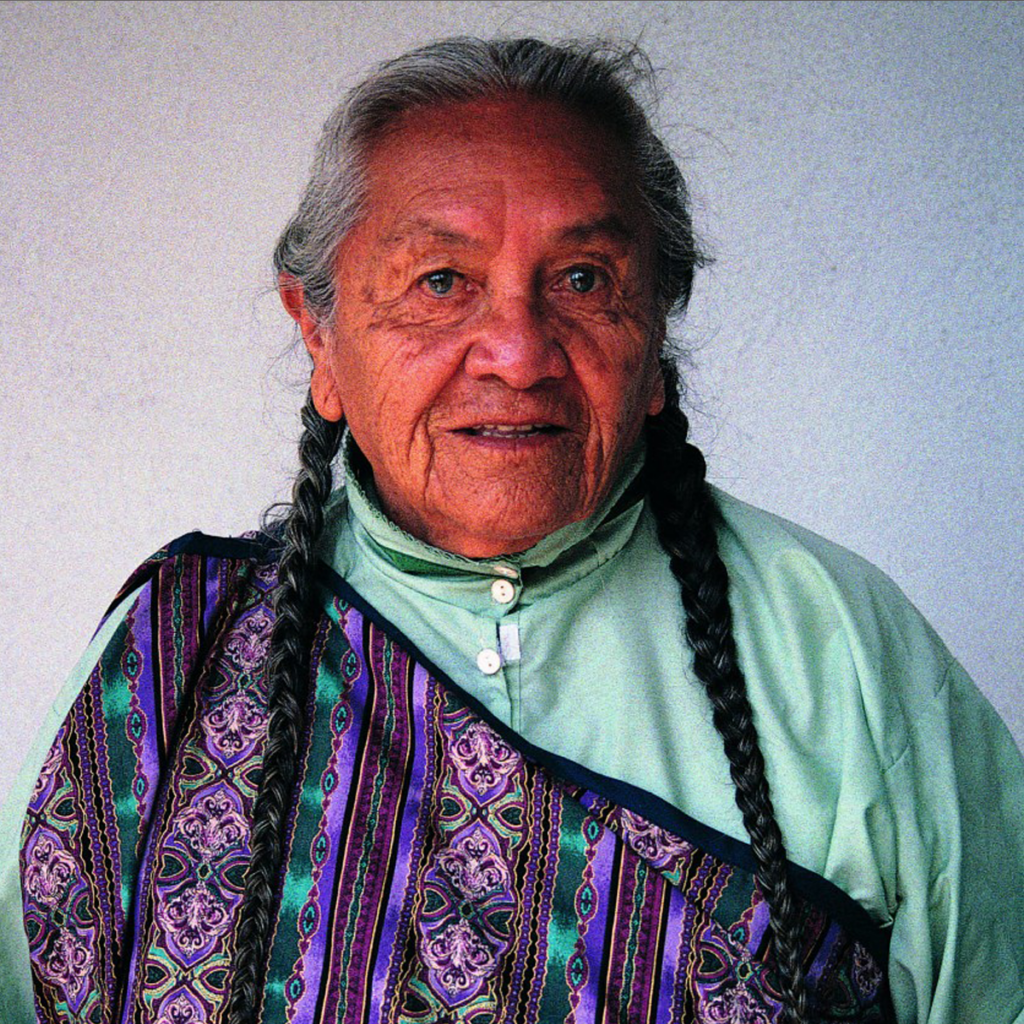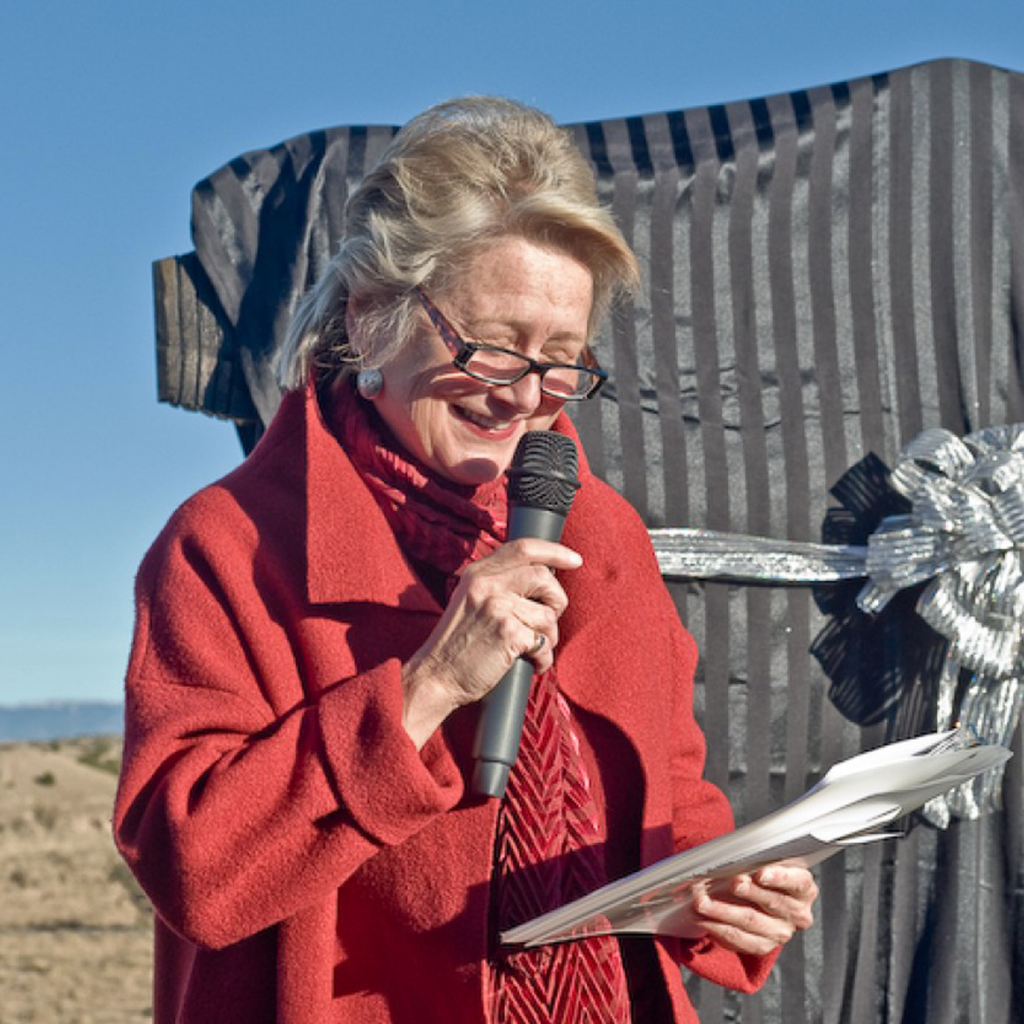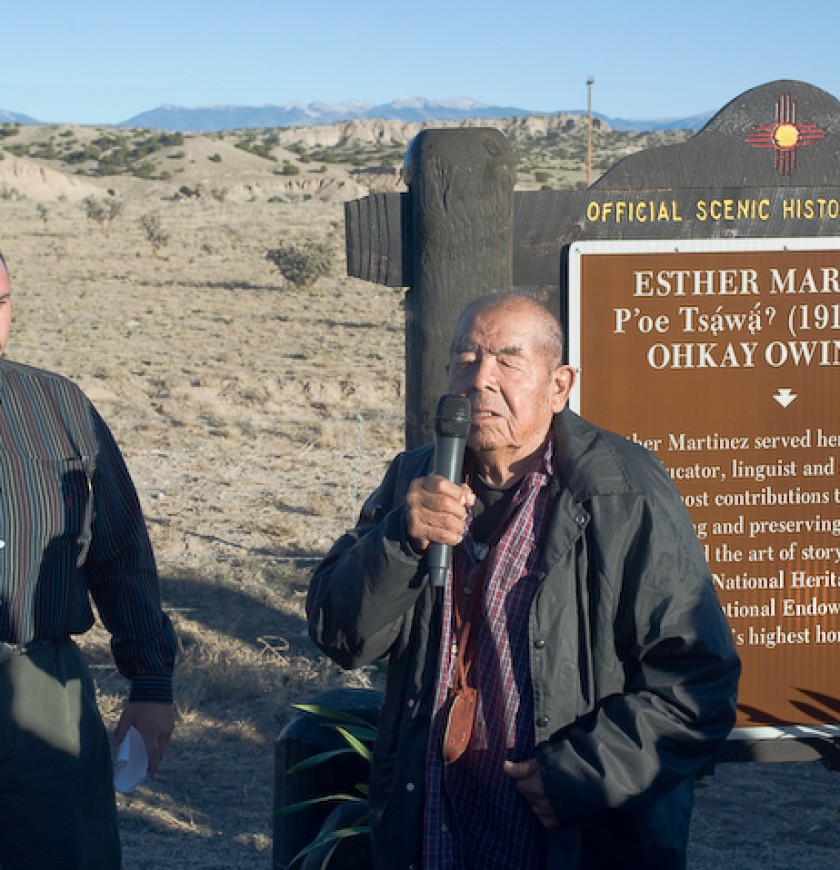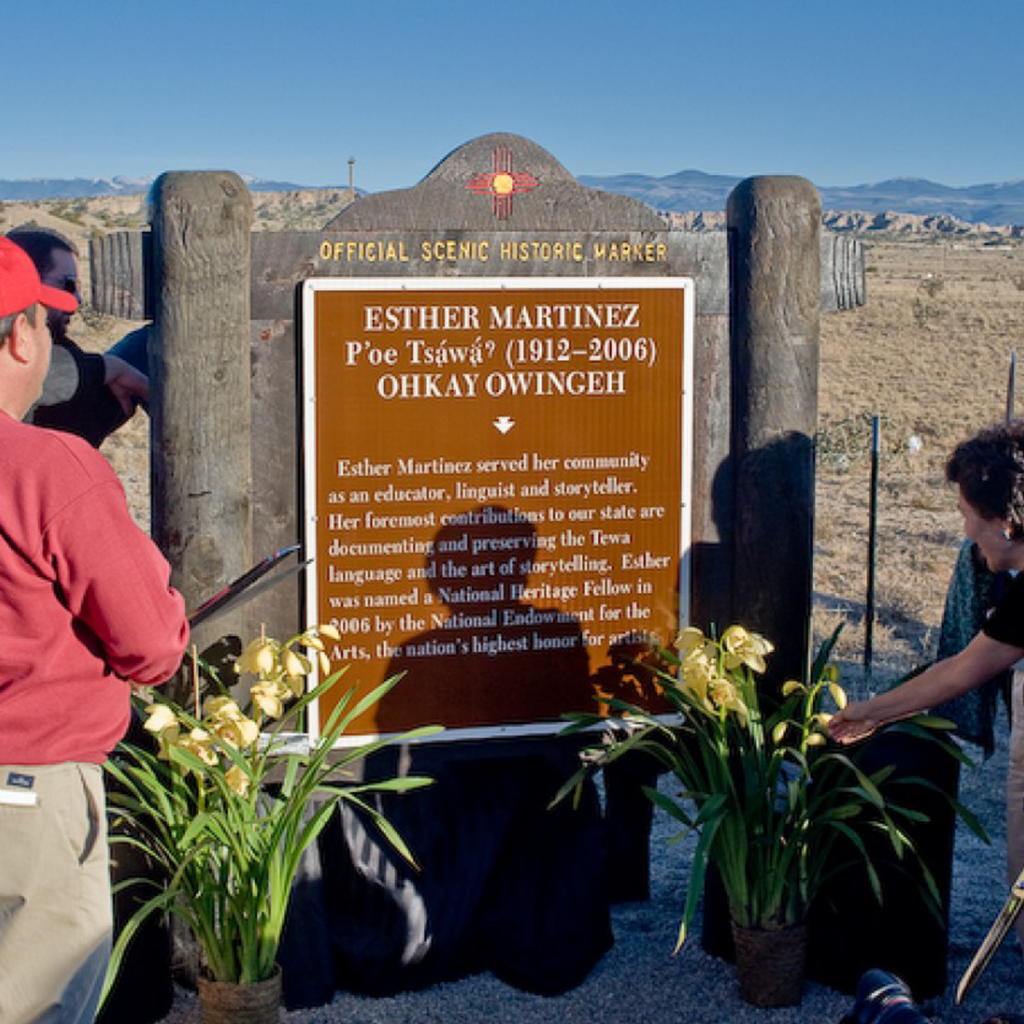Esther Martinez, P’oe Tsawa
Esther Martinez, P’oe Tsáwä
1912 - 2006
Rio Arriba County
She received dozens of awards recognizing her role as a storyteller, educator, and champion for the preservation of indigenous languages and cultures, and left behind a profound legacy and wealth of cultural knowledge that will guide her community of Ohkay Owingeh for generations.
Esther Martinez was born in Utah in 1912, the year New Mexico became a state. Her father named her P’oe Tsáwä (Blue Water) after his favorite fishing hole. When she was a baby, the family moved to Colorado, where her father, whom she described as a “jack of all trades,” worked as a miner, janitor, milkman, gardener, and night watchman. Although away from the Ohkay Owingeh pueblo in Rio Arriba county, the family remained connected to home by keeping the Tewa language alive. Visits from Martinez’s grandmother and grandfather also helped shorten the distance and keep the connection to her family roots. Martinez joined her grandparents at the end of one such visit, traveling by covered wagon to Ohkay Owingeh. This first visit the young girl made to the Pueblo extended into a longer stay with her grandparents and a close look at her heritage.
Life in the village was different from her prior living experiences. Houses huddled close together and shared common walls. Martinez’s grandmother would simply knock on a wall to get the attention of her sister, who lived next door in the connecting house. Martinez and her grandparents lived in a humble dwelling with no furniture and a bedroll that served as a bed at night and a chair during the day. In hindsight, Martinez noted that she appreciated the strong sense of community despite the absence of material wealth. From traditional storytelling by her grandfather and other elders, Martinez learned Pueblo values such as respecting elders and working as a community.
At about the age of ten, Martinez went to Santa Fe Indian School, a boarding school for Indian youth twenty-five miles south of Ohkay Owingeh. She completed her high school education, graduating from Albuquerque Indian School in 1931. Thereafter, she worked in a number of service-related jobs to support her ten children.
Martinez began her career as a linguist and storyteller relatively late in life. When she was about 54 years old she met Randy Speirs, a linguist, who at the time was working on a project documenting the Tewa language. He asked her if she would be interested in learning to read and write the language, which she already spoke fluently. She agreed and went on to take linguistic classes at the University of North Dakota and at St. John’s College in Santa Fe. In collaboration with Speirs, she helped to compile the San Juan Pueblo Dictionary, student curriculum guides, and storybooks, all in Tewa. She served as the Bilingual Education Program director and teacher for the San Juan Pueblo Day School from 1975 to 1985, and as co-director of the Tewa Language Project from 1995 to 1998.
She traveled throughout New Mexico, and occasionally to other states, telling her stories. In 1992, Martinez’s children’s book, The Naughty Little Rabbit and the Old Man Coyote, was released. In 2004, the University of Illinois published My Life in San Juan Pueblo, a collection of autobiographical stories detailing Martinez’s personal experiences, as well as Tewa stories. The book won the Kongas-Maranda prize from the Women’s Section of the American Folklore Society.
Martinez received dozens of awards recognizing her role as a storyteller, educator, and champion for the preservation of indigenous languages and cultures, including the Pioneer Award from the National Association for Bilingual Education (1992), the Indian Education Award for Teacher of Year from the National Council of American Indians (1997), and the New Mexico Governor’s Award for Excellence and Achievement in the Arts (1998). Sadly, in September 2006 Martinez died in a car accident shortly after receiving recognition from a Heritage Fellowship from the National Endowment for the Arts, the nation’s highest honor for folk artists.
Maritnez left behind a profound legacy and compiled a wealth of cultural knowledge, which will undoubtedly guide her community of Ohkay Owingeh for generations to come.
Sources:
Auslander, Jason. “Six-year Sentence Dismays Victim’s Family.” Santa Fe New Mexican, March 17, 2007, pp. A-1.
Bergey, Barry. Interview by Neal Conan, “The Storytelling Gifts of Esther Martinez.” Talk of the Nation, NPR, September 21, 2006,
Directions:
Esther Martinez, P’oe Tsáwä
Rio Arriba County
Artist | Cultural preservationist | Educator |
Statehood (1912 - present) |
North Central










